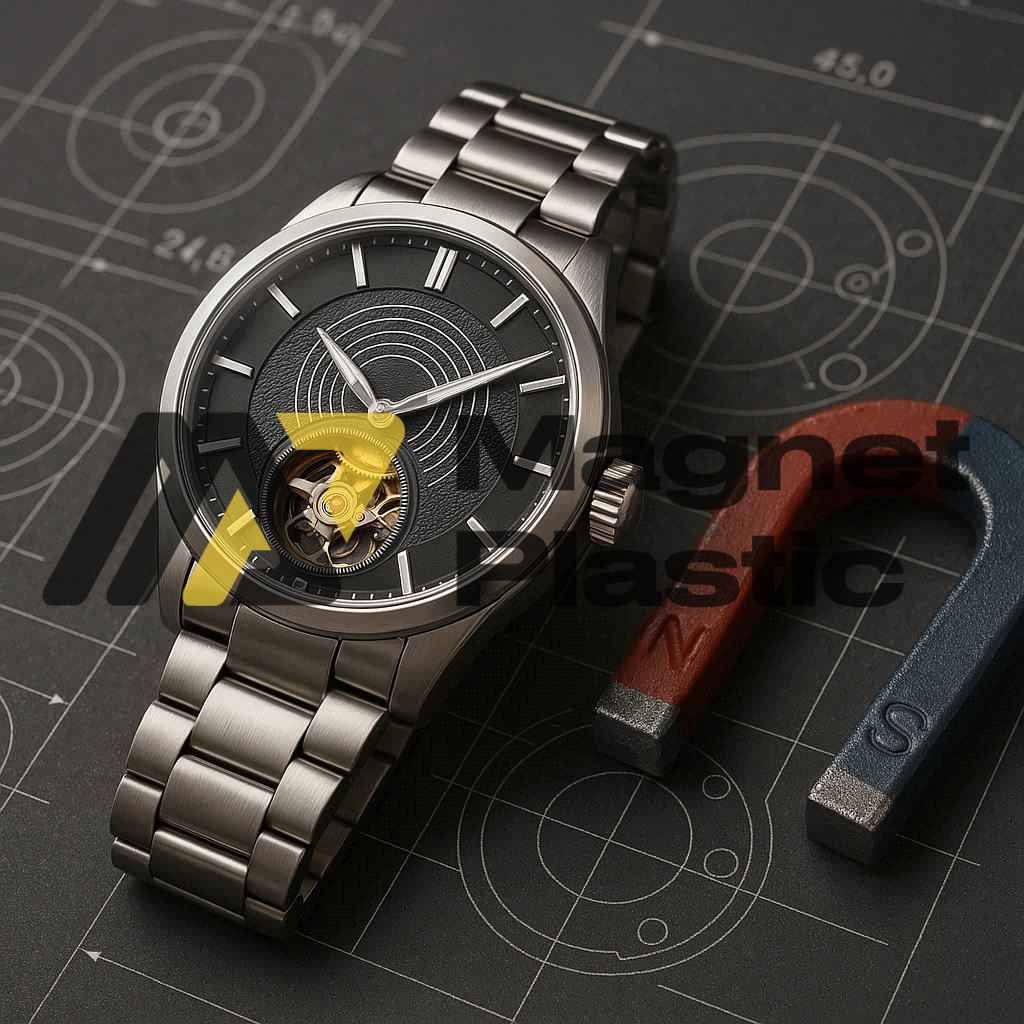Magnetic Technology in Watches
Watchmaking is an art that combines tradition, precision, and innovation. Throughout history, technological advances have transformed mechanisms, allowing watches to evolve from complex mechanical pieces into highly sophisticated electronic devices. In this process, magnetic technology has taken on an increasingly important role, both in the internal functioning and in the aesthetic design of modern watches.
Effects of magnetism on watches
Magnetism affects watches differently depending on their type:
- Mechanical watches: these are the most sensitive, as magnetic fields can interfere with the movement of metallic components, reducing accuracy.
- Quartz watches: less vulnerable, but the stepper motor that drives the hands can be influenced by magnetic fields, sometimes even improving precision when properly controlled.
Applications of magnetic technology
Magnetism is applied in various ways in contemporary watchmaking:
- Magnetic ball watches: these use small magnets to move spheres that indicate the time, creating an innovative effect where a ball appears to levitate due to magnetic force.
- Magnetic straps: often promoted for supposed health benefits, such as improved blood circulation and reduced inflammation.
- Antimagnetic watches: designed to resist strong magnetic fields, they are widely used in laboratories, industrial environments, and are especially common in diving watches.
Use of magnets in watch mechanisms
Magnets also play an essential role in the functioning of certain models:
- Analog quartz watches: stepper motors rely on magnetic force to advance the rotors that move the hands.
- Innovative magnetic watches: such as the MagicTime, which replaces traditional hands with discs or spheres controlled by magnets.
A notable example is the magnetic pivot system developed by the French brand Breguet, patented in 2010. This mechanism uses micro-magnets placed at both ends of the balance wheel axle, creating a dynamically stable system that self-corrects when disturbed. The difference in force between the magnets keeps the axle in contact with the pivot jewel, giving the impression of suspension. This design enhances stability, reduces friction, and improves overall precision.
Innovation and design
Other brands also explore magnetic technology. For example, Magneta combines microelectronics and magnetism in its time-control devices, while companies like Italogi create minimalist watches that dispense with traditional hands, using magnets to move visible elements.
Magnetic watches stand out for:
- Technical innovation: micro-magnets enable advances such as minute repeater movements in wristwatches.
- Craftsmanship: combining magnets with high-end materials such as titanium, ceramic, and carbon fiber.
- Distinctive design: featuring geometric lines, elegant sporty finishes, and ultra-thin calibers.
Conclusion
The use of magnets in watchmaking bridges tradition and ongoing innovation. Whether improving the precision of movements or inspiring futuristic designs, magnetic technology opens new possibilities, allowing watches to be both works of art and high-precision instruments. This balance of science, engineering, and aesthetics ensures that magnetic watches will occupy a unique place in the future of horology.
